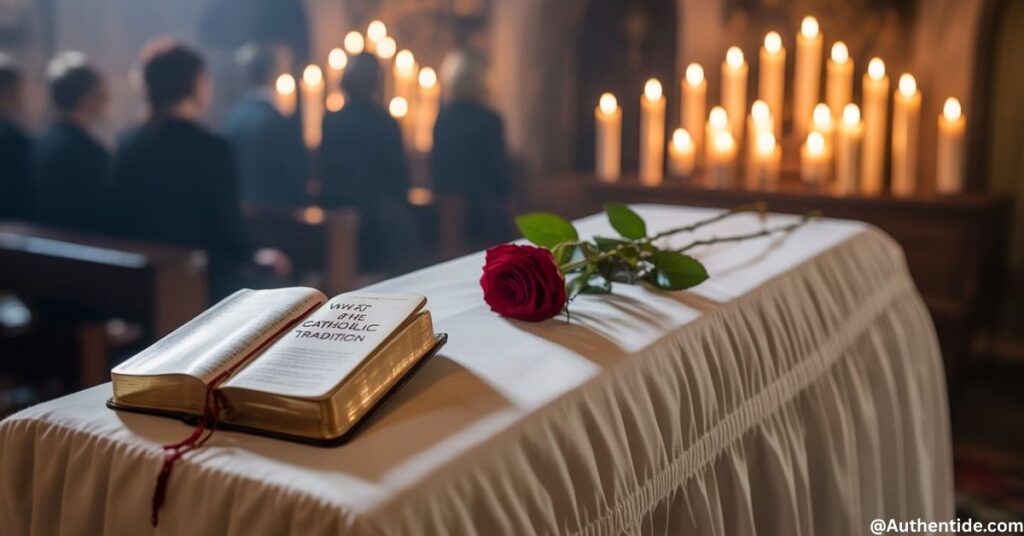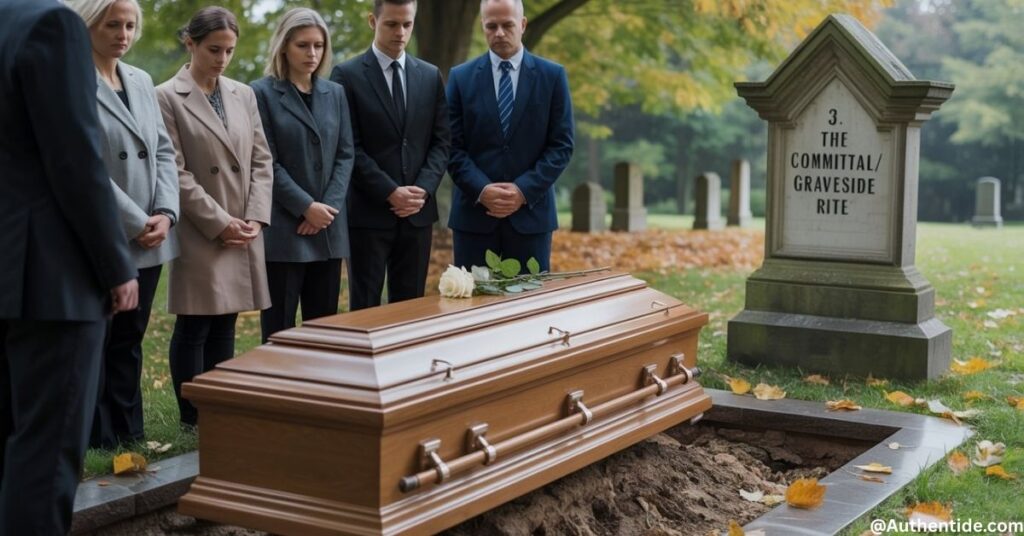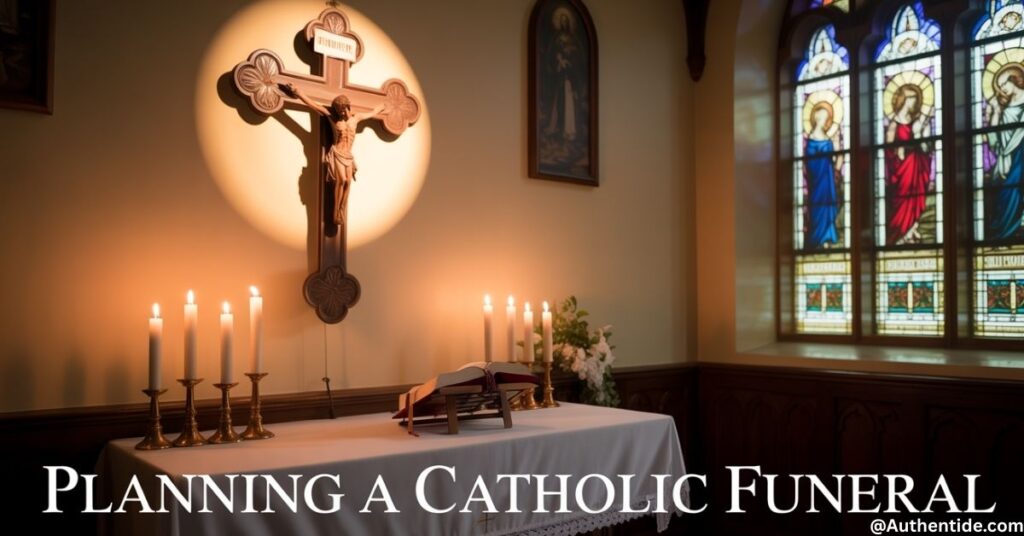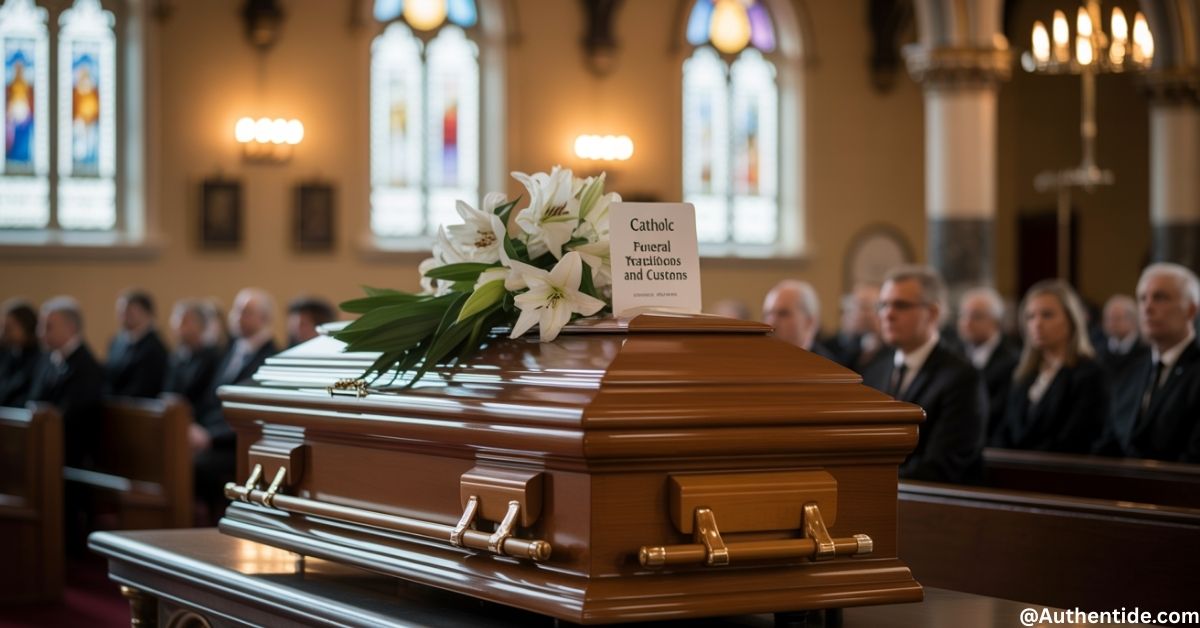Catholic funeral traditions and customs have guided generations through one of life’s most profound moments, saying farewell to a loved one. These rites are more than rituals; they’re woven with meaning, offering comfort, dignity, and hope rooted in faith. Each prayer, gesture, and symbol reflects the Church’s deep belief in eternal life, reminding mourners that death is not an ending but a passage.
When families face loss, these customs serve as a guiding force. They provide structure in a time of grief when decisions feel overwhelming. From the Wake / Vigil to the Funeral Mass / Requiem Mass, and finally the Committal / Graveside Rite, each step serves both the soul of the departed and the healing of the living. The rhythm of prayers, hymns, and sacred traditions doesn’t just honor the deceased, but it also unites the community in shared mourning and hope.
Unlike secular farewells, Catholic funeral customs invite families to reflect on resurrection, redemption, and the remembrance of loved ones. These ceremonies are not only about loss, but also about continuity, linking the living with centuries of believers who came before. Symbols like Holy Water, Incensing, and the presence of a Crucifix / Bible / Rosary during services reinforce a timeless truth: love and faith outlast death.
What Is the Catholic Tradition When Someone Dies?

When a Catholic passes away, the tradition unfolds in three major parts: the Wake / Vigil, the Funeral Mass / Requiem Mass, and the Committal / Graveside Rite.
- Wake / Vigil: Usually held at a funeral home or family residence, this is a gathering for prayers, Rosary recitation, and sharing stories.
- Funeral Mass / Requiem Mass: The heart of the Catholic farewell, filled with Readings, songs, poetry, Communion in Mass, and Resurrection prayers.
- Committal / Graveside Rite: A final blessing at the burial site, often accompanied by the words “Ashes to ashes, dust to dust.”
📧 Example Email:
Subject: Vigil for Mr. Thomas Reynolds
“Dear Sarah,
The family has arranged a Vigil prayer service for Thomas on Wednesday evening at St. Anne’s Chapel. We’ll begin with the Rosary recitation at 7 PM, followed by memory sharing. Please join us to support the Reynolds family.”
1. The Wake / Vigil
The Wake / Vigil allows loved ones to gather, reflect, and offer comfort. Often, a priest leads Vigil prayers, and guests may take turns offering Eulogies / memory sharing. Family members sometimes create personalized tributes with photos, letters, or even readings, songs, poetry that celebrate the person’s life.
📝 Scenario Example: A granddaughter might stand and read a favorite poem her grandmother cherished, weaving personal memories into the rhythm of the verse. This blending of tradition and individuality brings warmth to the solemn occasion.
2. The Funeral Mass / Requiem Mass
At the heart of Catholic funeral traditions, the Funeral Mass order follows a sacred structure: opening rites, Readings, the homily, Communion in Mass, prayers for the deceased, and the final commendation. The Funeral Mass length is usually between 30 and 60 minutes.
Important symbols appear here: sprinkling the casket with Holy Water, Incensing as a sign of purification, and placing a Crucifix / Bible / Rosary atop the casket. Hymns and Resurrection prayers provide comfort to those grieving.
📝 Scenario Example: During Mass, a family member like John might deliver a brief eulogy: “Dad taught us kindness through action. His legacy is etched in every smile he left behind.”
3. The Committal / Graveside Rite

The final step is the Committal / Graveside Rite, held at the cemetery or mausoleum. Here, the priest leads prayers and performs a symbolic cleansing of the burial site. The Committal duration typically lasts around 45 minutes.
It often includes lowering the casket or placing the urn, with relatives carrying the casket or urn as a last gesture of respect. Words like “Ashes to ashes, dust to dust” echo across generations, marking closure and hope.
Common Questions About Catholic Funerals
How long after death should a Catholic be buried?
The funeral timeline (2–7 days, ~3 days typical) provides space for family and community preparation.
What is the order of a Catholic Funeral Mass?
The Funeral Mass components follow a set structure: entrance hymn, Readings, songs, poetry, homily, prayers, Eucharist, and commendation.
How long is a Catholic funeral?
The Mass duration (~30–60 min) plus Committal duration (~45 min) means the service and burial can take about two hours total.
What should I wear to a Catholic funeral?
The Catholic funeral dress code calls for formal dark attire—black or muted colors.
Are there flowers at Catholic funerals?
Yes, flower arrangements are common, though simplicity is valued. Families may also request donations in lieu of flowers.
Planning a Catholic Funeral

Planning often involves both a funeral planning priest / funeral home. Families coordinate liturgical details with the parish and practical needs with funeral directors. Decisions cover whether to have a burial vs. cremation, selecting readings, songs, poetry, and arranging flower arrangements or personalized tributes.
📧 Scenario Example:
Subject: Planning for Margaret’s Service
“Dear Father James,
We’d like to meet tomorrow to discuss the Funeral Mass order, choose appropriate readings and hymns, and confirm the schedule with the funeral home. Please let us know what times work best.”
Alternative Funeral Options
While traditional burials remain central, many Catholics also explore alternative funeral options. One growing trend is the forest memorial ceremony, where families choose a memorial tree in place of a tombstone. This eco-friendly approach aligns with stewardship of creation while keeping the memory alive in nature.
📝 Scenario Example: A family might say, “Instead of a grave, we planted a sturdy oak as Dad’s memorial tree. Now, every season tells his story in leaves, blossoms, and shade.”
By blending faith and memory, families create a farewell that’s not just ritual but a heartfelt celebration of both life and eternity.

Your go-to place for smart synonyms and celebrity updates. Muhammad Hassan Abid is dedicated to creating useful, engaging content that informs, inspires, and truly serves your curiosity

